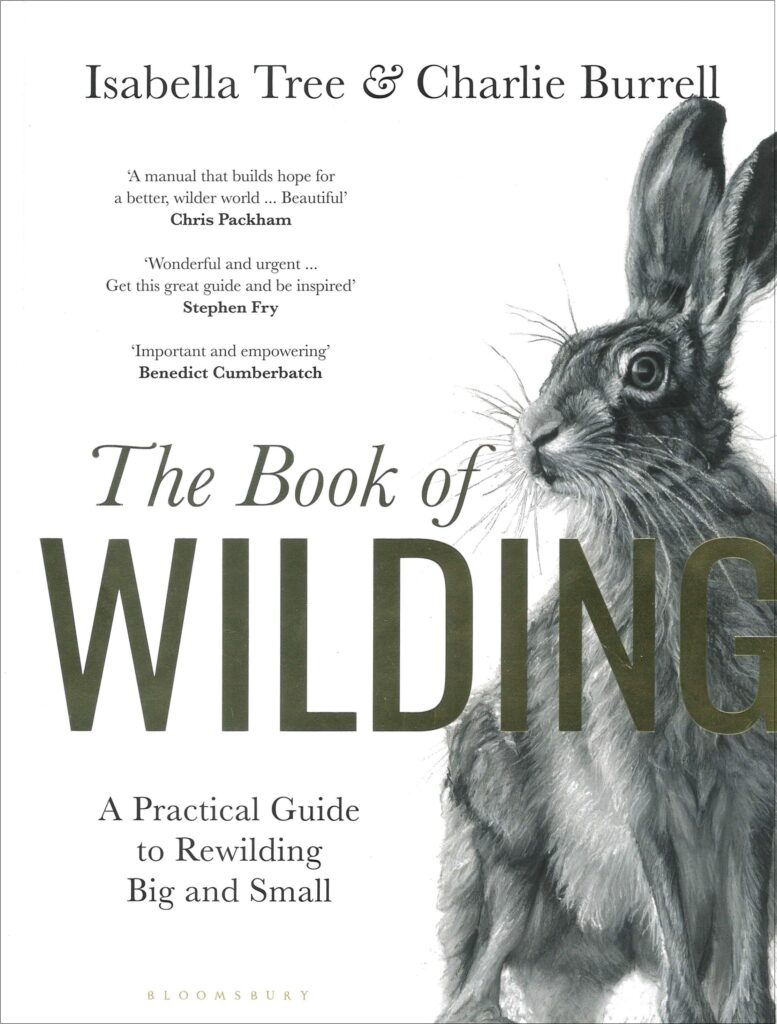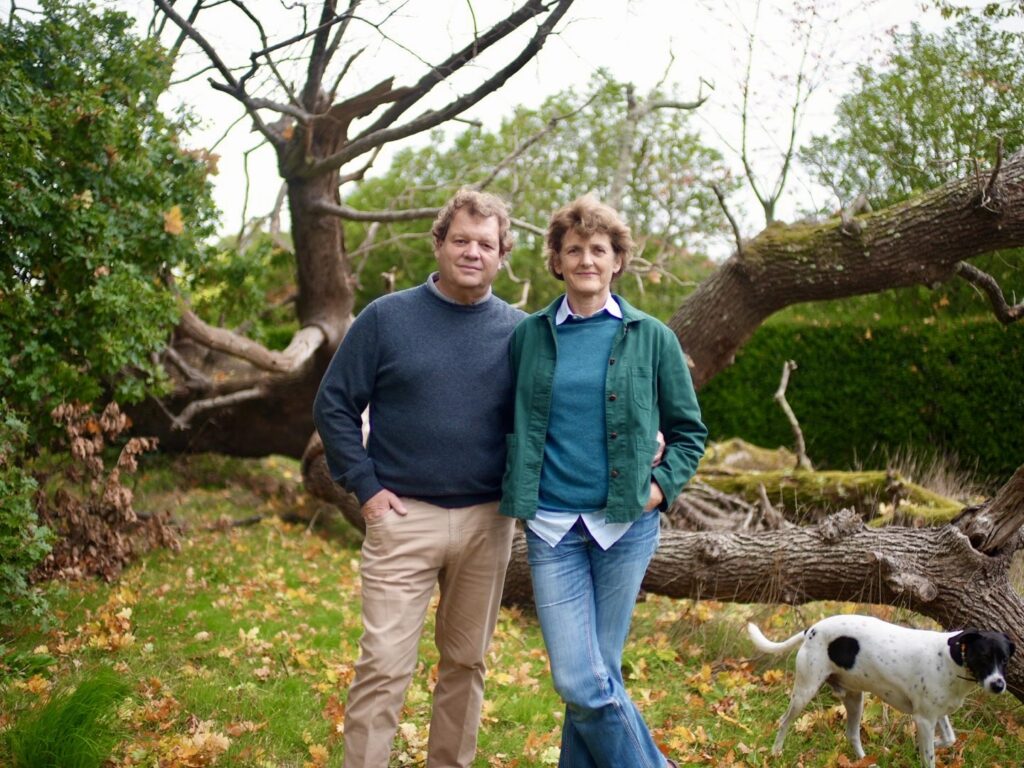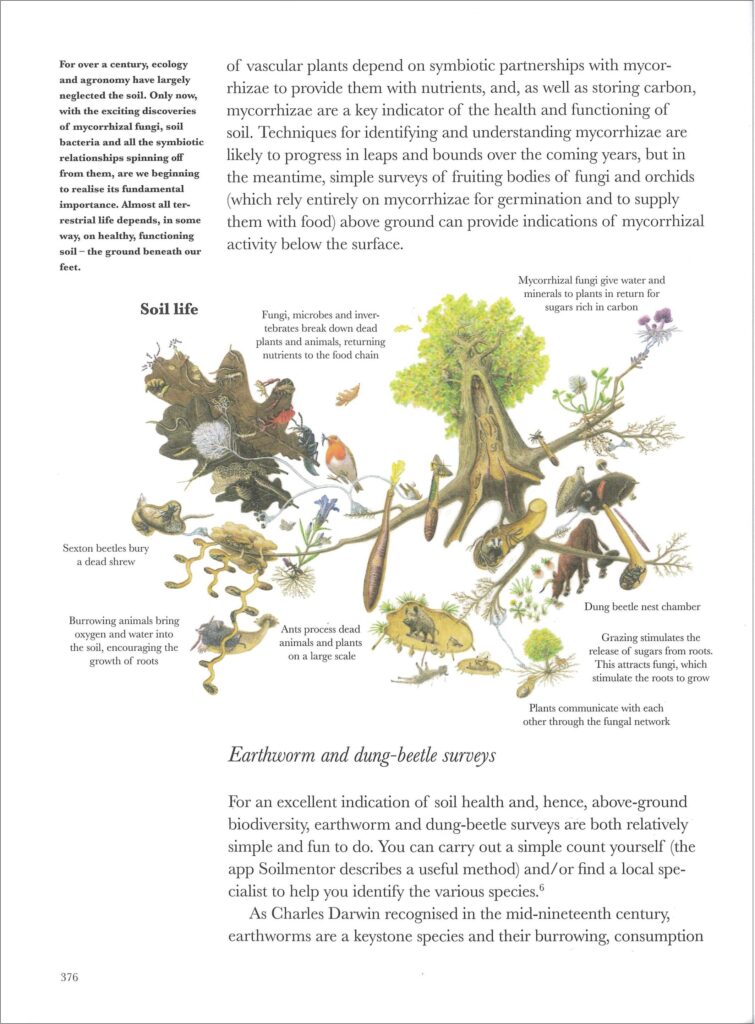 In the hotly anticipated The Book of Wilding, Isabella Tree and Charlie Burrell share some of the many lessons they have learned from their pioneering rewilding project at the Knepp Estate in Sussex. Explaining in detail why rewilding is important and how we can all play a part, this inspiring book is packed with practical solutions for rewilding on a range of scales, from farms and estates to allotments and gardens.
In the hotly anticipated The Book of Wilding, Isabella Tree and Charlie Burrell share some of the many lessons they have learned from their pioneering rewilding project at the Knepp Estate in Sussex. Explaining in detail why rewilding is important and how we can all play a part, this inspiring book is packed with practical solutions for rewilding on a range of scales, from farms and estates to allotments and gardens.

In our recent conversation with Isabella, she talks about some of the things she has learned through her years managing Knepp alongside husband and co-author Charlie Burrell. We also discuss ways of coping with eco-anxiety and how we can all make a difference to the future of the planet, even if we aren’t large landowners or farmers.
The story of Knepp Estate and its transformation from a struggling farm to a prosperous and famous rewilding project is incredibly inspiring. Looking back over your journey and knowing all the things that you know now, what would you say to the younger you who was just beginning on this path?
I would tell her that this is going to be the most exciting adventure of her life and rewards will come in spades. And not to worry about the occasional Exocet missile from disgruntled neighbours or a Twitter storm. The results will speak for themselves. It may feel like you’re swimming against the current, but soon the tide will turn. There are hundreds, if not thousands, of people out there in the UK who will soon be inspired to make the leap into rewilding too.
In relation to the first question, with the benefit of hindsight, are there things that you would have done differently, or were the challenges and potential mistakes a necessary part of the process?
The wonderful thing about rewilding is that there isn’t a detailed management plan, no specific goals or targets. Initially, you may need to put in some drivers (such as free-roaming grazing animals and restoring dynamic natural water systems) to kick-start natural processes again – especially if your land, like ours, has been ploughed and soaked in chemicals for decades. But then you’re stepping back and letting nature take over. That’s a huge relief in terms of lifting the burden of responsibility from your shoulders. Nature itself takes over the driving seat. So, in a way, there are no mistakes. It’s all about nature revealing itself, evolving in the way it wants to, anew. Often these outcomes are completely unpredictable.
The only management we do at Knepp is controlling the number of animals – neither too few, or too many – so their influence maximises the potential for diversity and abundance of life. And that is simply by observation. So, if we go too far in one direction, we simply – at some point – change the strategy. But we try never to respond with knee-jerk reactions. It’s a totally new way of thinking, very liberating.
 The Book of Wilding, while being a hugely practical guide to rewilding on all scales, is also a beacon of hope. In an age when eco-anxiety can lead even the most optimistic and determined of us to feel despondent, do you feel broadly hopeful that humans can do the necessary work to restore balance to our planet?
The Book of Wilding, while being a hugely practical guide to rewilding on all scales, is also a beacon of hope. In an age when eco-anxiety can lead even the most optimistic and determined of us to feel despondent, do you feel broadly hopeful that humans can do the necessary work to restore balance to our planet?
Yes, we absolutely can. If we work together, and realise our potential to bring about huge, transformative change. But you’re right to identify how the enormity of the environmental crisis we’re facing can make most of us feel despondent and impotent. The only cure for eco-anxiety, that I’ve been able to find, is to actually do something positive oneself. Even if it’s just establishing a window box and filling it with plants for pollinating insects – that small gesture can be hugely galvanising. It is part of a much bigger picture, contributing to restoring the web of nature – our life-support system – across the planet. Seeing butterflies and bees and night-flying moths arriving, on flowers that you’ve planted yourself, is balm for the soul. It gives you the kind of encouragement that allows you to lift your head above the parapet and think ‘what else can I do?’
The case you make for rewilding, both through the book and your decades of work at Knepp, are extremely compelling. What do you think are the main barriers to a more widespread adoption of this approach? Do you think that cultural and traditional values are more of an issue than the practical concerns of funding and knowledge transfer/availability?
Yes, in a way, I do. We’re seeing new streams of funding for rewilding and nature restoration all the time. Governments are at last making the move to pay for ecosystem services – improvements to the land that bring benefits to the public like clean water, clean air, soil restoration, healthy food, carbon storage, and flood protection, as well as wild spaces for human health and wellbeing. And the private sector (businesses concerned about their image, and now legally required to account for their carbon footprint and environmental impact) is beginning to make colossal investments in nature restoration – this is likely to be the most positive influence of all. So, the financial incentives are happening. But a major drag on action is down to public perception, and aesthetics.
We’ve grown up to believe the countryside should look a certain way, that rivers should be canalised, hedges clipped within an inch of their life, gardens should be tidy, lawns manicured. Insects are pests. Barren, overgrazed hillsides are natural. Apex predators are dangerous. Often, the biggest obstacle of all is changing our own mindset, questioning received wisdom, really asking ourselves ‘can I consider this landscape to be beautiful if I know it’s not functioning, if it’s actually harmful to wildlife and to ourselves?’ Ultimately, it’s about letting go of cultural values we may have accepted unquestioningly, understanding what makes an ecosystem function, to stop being a control-freak, allow ourselves to get messy, to let go – to rewild ourselves.
 Do you think that there are some misconceptions as to what constitutes rewilding? Particularly on a smaller scale where a more hands-on approach might be required to mimic the natural processes of herbivores, for instance – to the untrained eye this might seem more like conventional conservation management than rewilding.
Do you think that there are some misconceptions as to what constitutes rewilding? Particularly on a smaller scale where a more hands-on approach might be required to mimic the natural processes of herbivores, for instance – to the untrained eye this might seem more like conventional conservation management than rewilding.
Yes, indeed, small-scale rewilding (where there isn’t the space to use free-roaming animals, and there may not be dynamic natural water systems) has a lot in common with conventional conservation, and often the managers of ancient woodland or nature reserves may not be aware that they’re also acting like rewilders, being proxies, themselves, and mimicking the disturbance of wild herbivores – by doing things such as coppicing and pollarding, or putting woody debris blockages into rivers and streams (like a beaver) to create different flows and depths of water.
Where I think the rewilding approach brings something different, and more dynamic, is in varying the timing of interventions – so you might randomise when you cut a wildflower meadow, for example, and the intensity of cutting, so as to mimic the different factors that might affect herbivore grazing pressure in the wild. This will favour different suites of plants, maximising plant and insect diversity. Or try the passive-active-passive approach – doing nothing for a while, then going in with interventions, then leaving the area alone again for maybe several years. Basically, mixing it up, rather than applying steady, even, predictable management. Get rid of the level playing field!
I liked that you included a chapter on rewilding gardens, as this feels like an achievable project that any open-minded gardener could attempt. If done well, rewilding a small garden will have obvious benefits for the local plants and animals but, if done collectively, do you think it can also have a wider impact?
That’s one of the big themes of rewilding – connectivity. A friend of mine has created wonderful habitat in his back garden for insects, frogs, toads and grass snakes. But he’s also persuaded his neighbours to either replace their fences with hedges (great for nesting birds, especially if using thorny species such as blackthorn and hawthorn) or cut holes in the fence for hedgehogs. They’ve discussed the different habitats they can collectively provide for nature. One garden has a beetle bank and a pile of dead wood for stag beetles, another has a pond; some mow their lawns monthly, others only at the end of the summer; some have put up window boxes or planted ivy to climb their walls; others leave a pile of leaves or nettles and brambles in a discreet corner. Between them, they’ve created a whole string of different habitats that are connected, so they’ve become a wildlife corridor that also provides for species that have different demands at different stages in their life cycle. The next step is to connect with a nearby park by persuading the council to manage the roadside verges like wildflower meadows, and by planting an avenue of trees in the street. Their gardens already back onto a railway embankment, so ultimately they could be instrumental in creating a flow of life between open countryside and inner city.
 Finally – what steps would you recommend to the ‘average’ citizen who isn’t a large landowner or farmer and wants to go beyond simply rewilding their own small garden?
Finally – what steps would you recommend to the ‘average’ citizen who isn’t a large landowner or farmer and wants to go beyond simply rewilding their own small garden?
There are lots of groups and NGOs working for nature restoration in imaginative and exciting ways and many of them welcome volunteers, such as the Vincent Wildlife Trust which focuses on recovery programmes for bats and mustelids. Citizen Zoo is a community-focused rewilding organisation involved in reintroduction programmes such as water voles, beavers and large marsh grasshoppers. Derek Gow Consultancy runs courses on practical rewilding in Devon (rewildingcoombeshead.co.uk) as do we, at Knepp in West Sussex (www.knepp.co.uk). Caring for God’s Acre is a conservation charity which advises on restoring nature in graveyards and cemeteries. Become a member of your local Wildlife Trust (London has one, too). You could petition your local council to stop mowing verges, leave thorny scrub in unmanaged areas, rewild urban parks, plant more street trees and encourage green walls and roofs. And, perhaps most important of all, campaign to make your village, town or city pesticide-free.
 The Book of Wilding by Isabella Tree and Charlie Burrell is published by Bloomsbury. Hardback RRP £35.00.
The Book of Wilding by Isabella Tree and Charlie Burrell is published by Bloomsbury. Hardback RRP £35.00.





